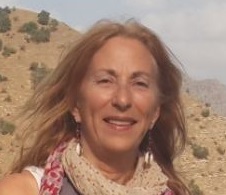
By Amy L. Beam, Ed.D:
Since Sept 3, 2014, Dr. Amy L. Beam has visited with hundreds of Ezidis in 12 refugee camps in Turkey. While camp directors and international media continue to say the Ezidis will return to Shingal “when it is safe,” she has not found one Ezidi refugee who agrees. To the last Ezidi, they emphatically state they will never return to Shingal (referred to as Sinjar in Iraq). These are their reasons. Ezidis beseech the international community to grant them asylum.
1. Ezidis Are a Different Ethnic and Religious Group
Although Ezidis speak Kurdish and share cultural similarities with Kurds, Ezidis insist they are a different ethnic and religious group from Arab Muslims, Kurdish Muslims and Christians. They have one god. They pray. They believe in peace and brotherhood, but, like Jews, they do not marry outside of their religion. Because they do not practice Islam, fundamentalist Muslims have accused them of “apostasy”. Shingal, in northwest Iraq on the border of Syria, is surrounded on all sides by predominately Arab Muslims and Turkmens. Ezidis feel betrayed by the Arab Muslims in Iraq because many Arabs are in the Islamic State (IS) and many others helped IS attack Shingal in August 2014.
The majority of Muslims in the Middle East, including Kurds, strongly oppose IS and state that its atrocities committed against Ezidis do not reflect Islamic religion. It is the Kurds that have rescued 27,000 Ezidis who fled to Turkey. There is much conjecture that religion is being used as a smoke screen to break Iraq into three territories. Regardless of who is behind the Islamic State and what its true motivations are, Ezidis were targeted in Shingal while Arab and Kurdish residents were protected.
For example, IS captured a group of Iraqi government workers on their way home. The Muslims in the group were told to go home. The remaining 22 Ezidis were shot dead. Saado Hadji Kheder, aged 37, was one. He left a widow and two children behind who fled to Turkey. Ezidis can never trust living under Muslim control again.
2. A History of Ezidi Genocide
There have been 73 previous massacres committed against Ezidis in the last 1400 years. The Ezidi community suffered one of the worst attacks in 2007 when 312 people were killed and more than 600 were wounded when four trucks loaded with explosives destroyed two Ezidi towns. The 2007 attack left more than 1,000 families homeless. IS announced at that time that this was the first step to end Ezidis in Iraq.
The brutal attack against them that began Aug. 2, 2014, is the most violent. Over 500,000 Ezidis have been displaced and an estimated 7,000 men, women, and children have been killed or kidnapped in the Islamic State attack on Shingal. They do not believe the history of massacres will change, and thus, they can never again feel safe living in Shingal or anywhere in Iraq. It will be only a matter of time until the next massacre.
Since 1930, Ezidis have been persecuted, threatened, harassed, and physically attacked every year in Iraq. It has been documented that when the Ezidis formed their own political party, the “Ezidi Movement”, the Peshmerga fought against them, kidnapped them, jailed them (Kamal Murad Khalel, Kheder Alo Hakko, Sa’eed Mando Hammo, Khalel Rasho), and beat them while in jail. Many paid ransoms in the thousands of dollars to be released. There was no coverage by journalists. There were no independent civil society organizations. Ezidis have been pressured to join Barzani’s KDP (Kurdistan Democratic Party) and say they are Kurdish. The Kurds changed the demography of the Ezidi regions in Shingal, Sheikhan and Bashiqa. Ezidis are oppressed in Iraq and lack free expression and freedom of travel.
3. Kurdish KDP Peshmerga Abandoned Ezidis
Shingal is a disputed territory between Baghdad and KRG (Kurdistan Regional Government). The Iraqi army was not allowed in the region prior to the August 2014 attack. The KDP-controlled Peshmerga defense force took responsibility for defending Shingal. The IS attack began at night. The Peshmerga fled even before the civilians. (Later many Peshmerga defended their actions by explaining they did not have the defenses to fight against Islamic State tanks.)
Many Ezidis woke up to discover their defense forces had abandoned them, so they literally ran for their lives within minutes with the clothes on their backs. This has been confirmed by hundreds of Ezidis who spoke to this writer.
On June 10, 2014, Mosul fell to IS. All government security forces including police (IPS), Iraqi soldiers, Border Police (IBP), and Iraqi National Guard (ING) removed their uniforms and fled from Mosul and disputed areas taking their weapons, Hummers, and cars with them to their homes. The same day they arrived home in Shingal, the Peshmerga forces came to their houses and took their weapons and government vehicles from them.
After the Peshmerga abandoned the villages and Shingal city on the south side of Mount Shingal on Aug. 3, the Ezidis fled to the north side of the mountain and on to the border of Syria. By the morning of Aug. 3, Ezidis living in Zorava village on the north side of Mount Shingal knew that the Peshmerga in their village would flee, also. Some Ezidis had volunteered to defend Zorava and were working with the Peshmerga. Other Ezidis were officially employed by the Peshmerga. A dozen other Ezidis who had no guns went to the KDP-controlled Peshmerga base and asked for the Peshmerga to return their government weapons to them to defend against IS since the Peshmerga would be leaving the town. There were seven or eight trucks of guns. An argument ensued, and an Ezidis witness says one Peshmerga sprayed the group with bullets, killing Ali Elias Yousif and his two nephews, Yousif Khalaf Elias and Ayet Naif Murad who died in hospital. All three killed were Ezidi Peshmerga employees. Jamel Khalaf Elias was injured.
Another Ezidi claimed first-hand knowledge that the Peshmerga were selling guns to the IS through intermediaries.

Ayet Naif Murad (smiling here), died two days after being shot, Ezidis say, by KDP-controlled Peshmerga
Ezidis swear they can never again trust Kurdish Peshmerga forces. Although this may be an over-generalization of all the Peshmerga forces now fighting against IS, the broken trust is irreversible. All Ezidis insist it was only the PKK and YPG guerillas that opened the way for their escape from Shingal mountain to the Syrian border then to Zakho where PKK fed them and guided them over the mountain to Turkey. Ezidis will not change their thinking on this point.
4. Arabs and Kurds Betrayed Their Ezidi Neighbors
When the Islamic State gangs were attacking the villages in Shingal, some Ezidis took refuge in the homes of their Arabic or Kurdish friends and neighbors. While some did protect their Ezidi neighbors, other Arabs and Kurds willingly turned the Ezidis over to IS for payment.
Namer Yousif Osman fled from his village of Gohbal to Shingal Mountain with his eight daughters and 23-year-old son, Said Namer. On the third day, Said volunteered to sneak back to their village for food because they were starving. IS caught him and cut half-way through the back of his neck with long swords while his father watched helplessly from the mountain. Namer had no ammunition to protect his son.
Namer explained that three other families from Gohbal village, comprising about 50 Ezidis, took refuge with Arab neighbors who called IS to come and get them. A father and son had their necks cut like sheep. The others are missing.
When Ali Merza Abo was fleeing from Sinjar city, they were stopped at an IS check point. A local Kurd was with IS in this check point. When they asked for Ali’s ID which stated he was Ezidi, they shot and killed Ali and his son Delsad Ali, as well as three other men. There are hundreds of stories like these.
In Shingal, many of the guides who led IS to the Ezidis who then killed them were Kurdish Muslims from Shingal from Kechala, Sarhokia, Jankulia, Khatonia, Kutoia, and other tribes. The practice of IS paying Arabs and Kurds to turn in Ezidis is documented back to at least 2007. Before IS named itself, Ezidis knew them as the “bad guys” or “terrorists”.
5. Terror and Atrocities Used as a Strategy of War
IS’s war strategy is to create a state of terror through savage, unprovoked, and unexpected attacks including beheadings, crucifixions, physical attacks, firing machine guns into people gathered in the streets, and mass executions by bullets to the back of the head while Ezidi victims kneel or lie on their stomachs awaiting their death. Photos show small children beheaded, hanged by the neck over the side of buildings, and naked babies deeply slashed open between their legs. One woman lies dead with her breasts slashed open to the chest bone. One can only hope they killed her with a bullet first. Other photos show piles of heads and truckloads of dead, mutilated bodies. Another photo shows a bulldozer clearing the road of piles of dead bodies.
Men in Seba Shekhder village were beheaded and hanged from their legs on electricity poles. There are reports of about twenty families including children, women and men who were buried alive by IS in the same village. In the village of Al Koço, 450 people were killed by the sword or shot. Eight people escaped and reported the massacre.
Dler Havend Khalaf was in his second year of medical school when his town of Tel Qassab was attacked on Aug. 3. 67 women and children were kidnapped including his sister and 20 other relatives when they stopped to rest in Qine Mehrkan village. His brother-in-law was one of 28 men killed. One young woman from his village jumped to her death after watching IS kill her whole family of 21 people before her eyes.
The family of Faisal Mahmood Kherro (tel: 004915226802388) who is from Tel-Uzer and living now in Germany had fifteen girls and six women from his family kidnapped by IS. They killed his three brothers (beheaded one), two nephews, and two cousins.
The lists go on. Ali Sedo, President of the Ezidi Academy in Germany, has compiled lists of more than 3000 killed or kidnapped Ezidis. Dr. Amy L. Beam is also compiling lists from Ezidis inside the refugee camps in Turkey.
Reports of IS training camps describe new recruits as being taught how to behead a person and glory in gore and guts. Recruits for IS are world-wide, sometimes coming from criminal backgrounds and allegedly being paid to join. At least some of IS members are allegedly mercenary soldiers from countries such as China, the UK, Germany, France, Netherlands, Belgium, Saudi Arabia, Yemeni, Turkey, Chechnya, Egypt and elsewhere. While hiding behind the cloak of religion, IS’s savage murders have nothing to do with true Islam.
6. Ezidis Forced to Convert to Islam or Die
Approximately 2000 Ezidis have been kidnapped and forced to convert to Islam or be executed. One Ezidi family in a Sirnak refugee camp identified four of its family members in the IS propaganda video showing Ezidis converting to Islam, kneeling and going through the motions of praying. They made a list of 28 female relatives kidnapped by IS. IS let one of their kidnapped cousins call his brother who is a doctor who escaped to an Ezidi camp in Turkey. He said thousands are being held and IS is killing them regularly even though they converted to Islam. Others are being used as slave labor to pack cereal to send to IS fighters in Syria. Many other kidnapped Ezidis have disappeared, and it is not known if they are dead or alive.
7. Ezidis Raped and Sold into Slavery
At least 2000 women, girls, and boys have been kidnapped and are being raped as a weapon of war by IS gang members. One girl managed to call a male friend on a secret phone and report she had been raped continuously for 18 hours. She said she will kill herself when she has the opportunity. Other teenage girls were taken to Mosul hospital and underwent surgery for severe internal bleeding due to repeated daily, brutal rapes. Some have been sold into sexual slavery in Mosul, Saudi Arabia, and Syria for as little as $5 US dollars, with other reports averaging $100 US dollars.
8. Houses, Businesses, Cars, and Money Looted
Although the “lucky” families did not have members killed by IS, their lives are also destroyed. The cities and villages of Shingal are empty of Ezidis. IS and other Arabs and Kurds have looted all the homes of all valuables, destroyed many houses and moved into others, and taken over Ezidi businesses. Dr. Mazen Qasem Abadi lost his family’s chicken farm worth $500,000 US dollars to IS. Ghanow Hussen Ghanow’s family, now in Sirnak Ezidi camp, left behind their chicken factory in Senon with 8000 chickens worth $50,000. Arab neighbors took it over for themselves.
Although Ezidis have suffered previous massacres, this is the first time the entire population has left its ancestral land. Ezidis left everything behind. They now have no houses, jobs, cars, businesses, neighbors, money, gold, computers, possessions, or schools. Every Ezidi in the refugee camps in Turkey, even young teenagers, laments “Our life is finished.” The refugees are without hope for their religion, ethnic customs, and community continuing, because they have lost their homeland. There is literally nothing to return to.
On Sept. 23, IS demolished 90 Ezidi houses in Shingal. In the first week of October it was reported that IS was torching all the houses in all the Ezidi villages in Shingal. The houses of Ali Sedo and his brother, Khalaf Sedo, (mentioned earlier) were both destroyed. Khalaf and his family are now refugees in the village of Fikira, Batman, Turkey. The Batman municipality is restoring empty houses in 20 Ezidi villages that the Turkish state destroyed in the early 1990s. Fikret Taşkin is the project manager. The Ezidi refugee families will live in them. The local Kurdish municipality will assist them until solutions are found.
Farhan Mahlo (tel: 0090 0531 818 9490), now living with his extended family of 13 in Sirnak Ezidi commune, had a good job with an oil company. He is one of dozens of Ezidi translators in the refugee camps who formerly worked for the U.S. Army. His family lost four houses, a car, a truck, 111 sheep, and two kilos of gold. He laments the loss of his computer that stored his work and photos of his lifetime, that is, his memories. He has a wife, a two-year-old and a six-month-old son whom he carried on his back through the mountains to Turkey. Now this talented and educated man is reduced to asking for a winter coat and credit on his phone. He wants to work. Multiply Farhan’s story by at least 400,000 Ezidis.
9. Safety in Shingal Is a Moot Issue
Many well-meaning supporters of Ezidis, including displaced Ezidis living in Europe, the Kurdish political party in Turkey which is providing them with food and shelter, the Turkish government, and forces fighting to defeat IS express the position that the Ezidis can return to Shingal “when it is safe”. The question of safety is now a moot issue to Ezidis. The Ezidis left behind dead family members and fled in terror. They have been betrayed by their government and their Arab and Kurdish Muslim neighbors. Their trust has been destroyed and can never be restored. They can never feel secure and live without fear in Shingal. They can never live in psychological peace. If someone else wants to volunteer to go live there, they can. As for the Ezidi refugees in Turkey, they want only one thing: to live in a country that is peaceful and safe so they can give their children a wonderful life without repeating their own suffering.
10. Ezidis Are Stateless People
Most Ezidis do not have a passport because they did not take the risk to travel to Mosul to apply for one. In the past, those who did risk traveling to Mosul or other places outside of Shingal have been questioned, attacked, and even killed. Ezidis have specific names and features, and “Ezidi” is written on their IDs. Many of them were killed in Baghdad and Mosul after they had their passports issued, because the officers identified them and the “bad guys” followed them when they returned from Baghdad or Mosul to Shingal (Sinjar).
Consequently, up until IS’s attack on Shingal on August 3, 2014, the KRG was issuing the passports for Ezidis in Dohuk. The KRG has stopped issuing passports to Ezidis. Most of the Ezidis who fled to Turkey, as well as the ones who took refuge in Kurdistan, northern Iraq, have no passports. Their lack of documentation is a major obstacle for them seeking asylum in other countries. Countries of the world must offer asylum with alternative documentation.
When one man in Diyarbakir Ezidi camp was asked if he had to choose between having a homeland for Ezidis and finding a safe country in which to live, he did not hesitate answering. “Raising these two boys is more important than keeping Shingal. We will go anywhere to live in a safe and peaceful country, even as far as Australia.”
Australia, France, and Germany have already indicated they will not turn Ezidis away. The problem is getting there without passports or money.
text and photos copyright 2014, Amy L. Beam
Dr. Amy L. Beam promotes tourism in eastern Turkey (North Kurdistan) and writes in support of Kurdish and Ezidi human rights. Read her stories at KurdistantTribune.com. She is writing a book, “Love and Betrayal in Kurdistan.” Follow her on Twitter @amybeam or contact her at amybeam@yahoo.com or 240-696-1905 (U.S.) or 0090 537 502 6683 (Turkey).
.jpg)


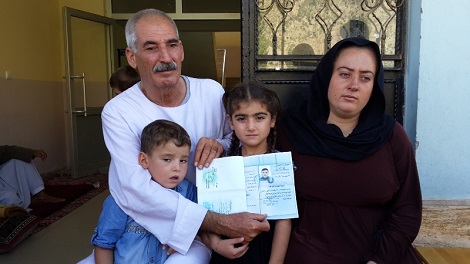
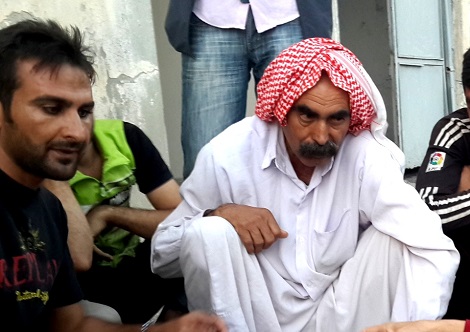

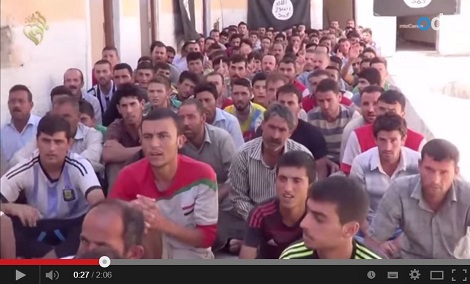
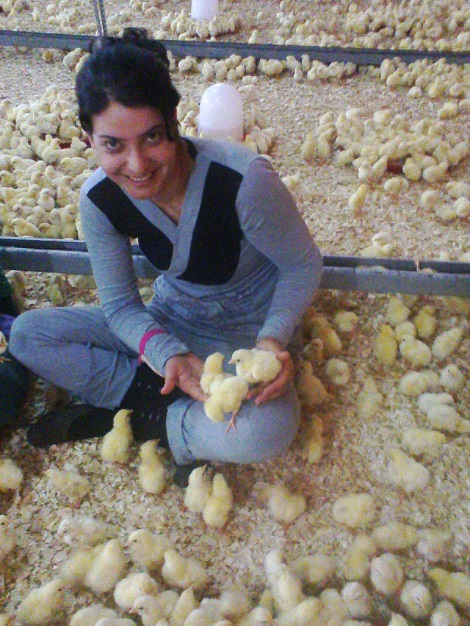
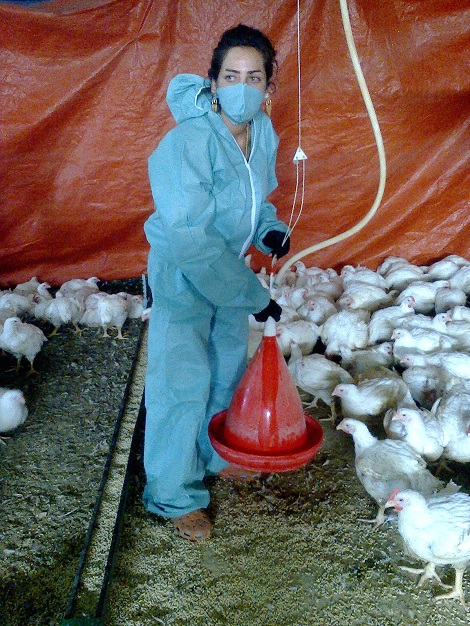
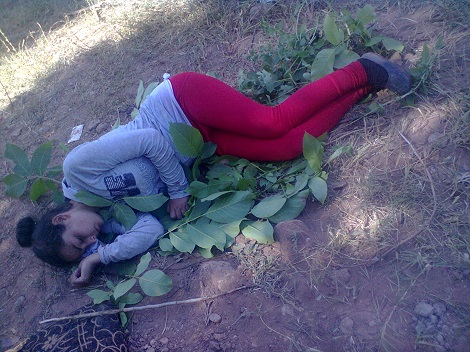
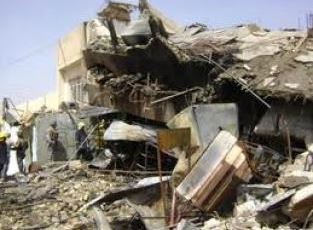
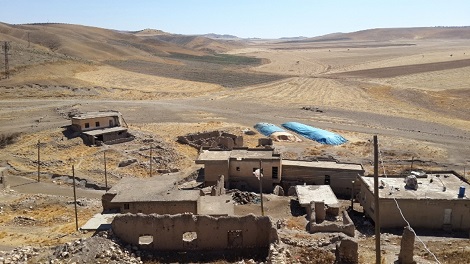
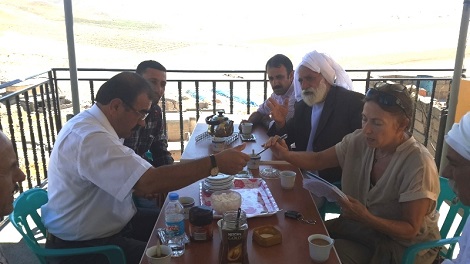
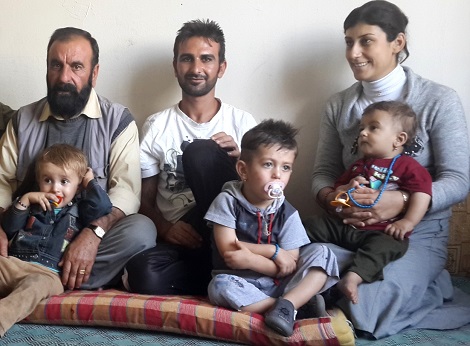

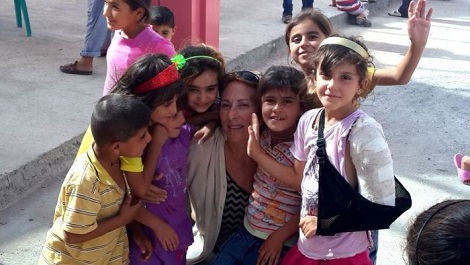

Turkey has blocked my tweets so I cannot share this link. Please share it for me with the world.
A radical solution should be sought for all religious minorities in Iraq. The best is to resettle in an independent South Kurdistan permanently. Kurdish officials did make some unintentional mistakes here but hopefully, it will the end of their sufferings. Once the IS conflict is over, KRG should compensate that misstep by subsidizing Christians and Ezedis minorities in all aspects.
To fellow-Kurdish citizens:
KIM has been shut down on Facebook temporarily against our will. We will soon make an important announcement regarding our independence. We appeal to KNN or NRT to offer us an opportunity to deliver our message on their TV station.
[…] sure to be a point of legal debate if and when Turkey decides to send the Yazidis back to Iraq. Ten reason why Yazidis refuse to return to Shingal have previously been described by this writer and provide the basis for which countries should […]
I as an Ezidi Man from USA, I appreciate your efforts for helping those Ezidi refugees, telling the truth, making it clear for the world to know what Ezidies been going through, thanks for everything, I will share this
Thank you, Mirza.
[…] to insist that they want to go to Europe and refuse to return to Iraq. (See “Genocide: 10 Reasons Why Ezidis Refuse To Return To Shingal.“) They express gratitude to the PKK forces, but the Yezidis do not want to be used as pawns […]
[…] [17] Amy L. Beam, Genocide: 10 Reasons Why Ezidis Refuse to Return to Shingal http://kurdistantribune.com/2014/genocide-10-reasons-why-ezidis-refuse-return-shingal/ […]
[…] [17] Amy L. Beam, Genocide: 10 Reasons Why Ezidis Refuse to Return to Shingal http://kurdistantribune.com/2014/genocide-10-reasons-why-ezidis-refuse-return-shingal/ […]
I was reviewing my article of exactly one year ago today and none of the reasons for leaving Iraq has changed. I have heard hundreds more testimonies to confirm every word I wrote then. Yazidi supporters should please lobby the US Congress to pass H.R.1568 – Protecting Religious Minorities Persecuted by ISIS Act of 2015.
Yazidis are an Ethnoreligious Group. They are peaceful and love God and believe in Goodness. They need to be protect by UN. Please People help them. KRG is oppressing Minorities not only Yazidis…Assyrians Turkmen and Shabak. They should stop occupy land. Yazidis need international protection zone. Own autonomy. Independently. Not slavery of Kurdish Dictators. Stop suffering Yazidis.
Hi Amy L Beam
I would like to add my voice to yours for support Ezidis as they are holding their unique believe system as genuine Kurd. For that reason, they need special treatment from Unite Nation for they able to preserve their believe. Moreover; they are valuable for anthropological research to understand the believe system of Mesopotamian. In my view, they are preserved Mesopotamians believe system. For example word of Ezidis is like symbol of bird and snake is combined of two side. Ezidis’s word is combined word of Ez + di which mean I see, I see the light. The light is god (God + Goddess). Mesopotamians believe system was based on two aspect of let us say he+ She or high/low as way life is combined of water and Sun(Malic Twis). And Yazdan mean God as well. In Yazidis believe system snake and bird representing deep/ high aspect of universe or beginning (snake as water moving) and the end (sun as ever is shining) in universe (sky). In Mesopotamian universe made out of body of primary which was water (God and Goddess)
[…] [10] http://kurdistantribune.com/2014/genocide-10-reasons-why-ezidis-refuse-return-shingal/ […]